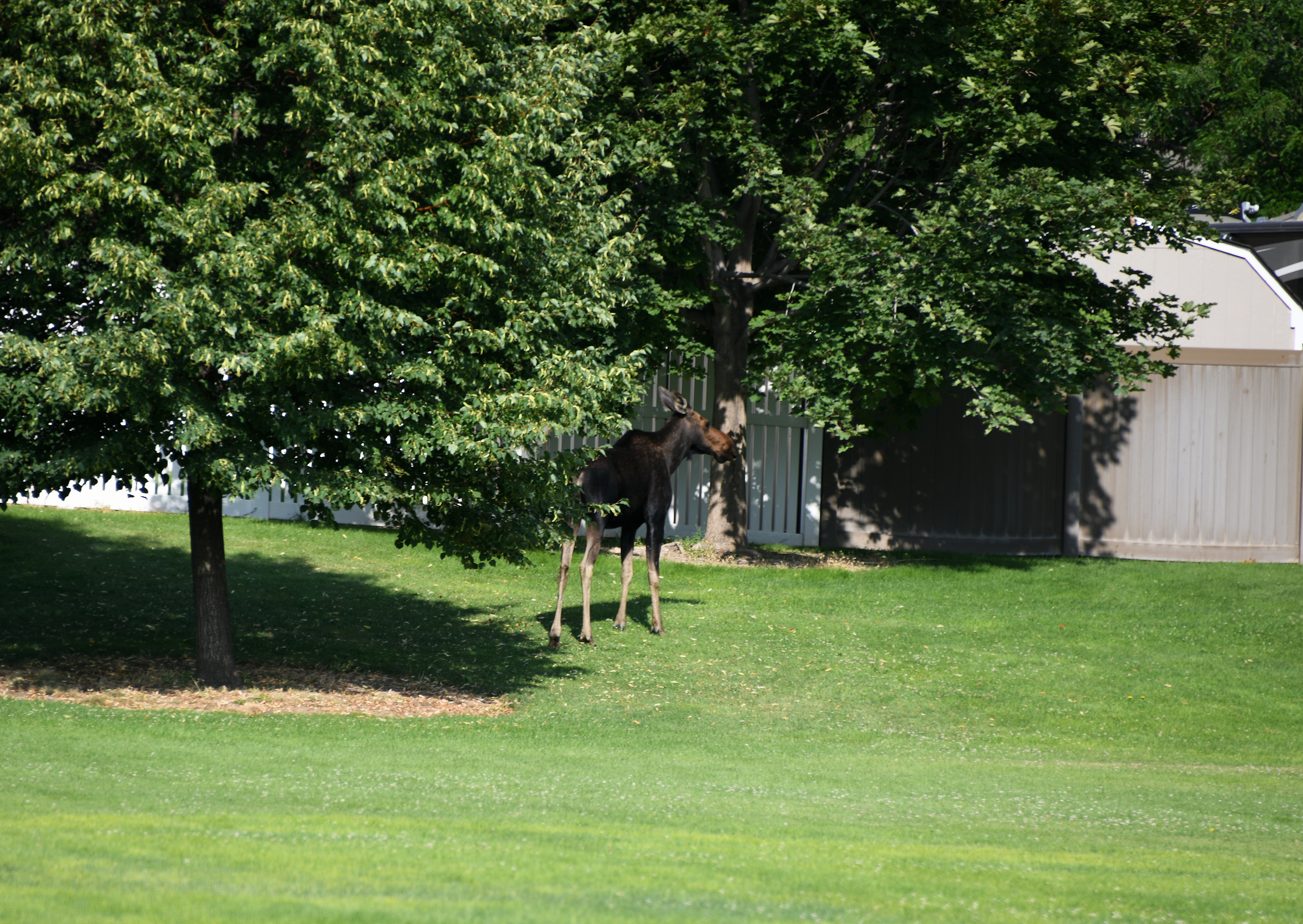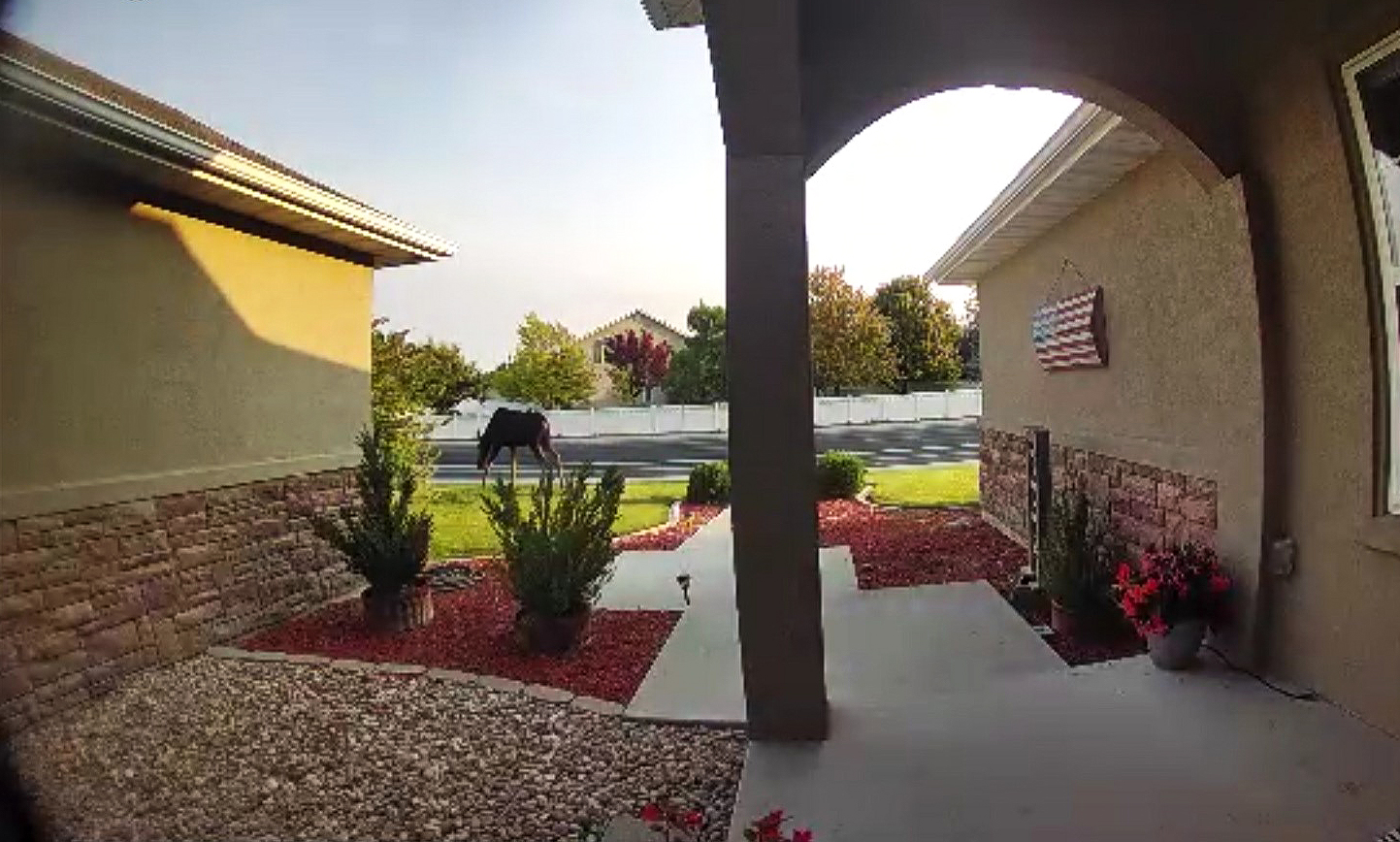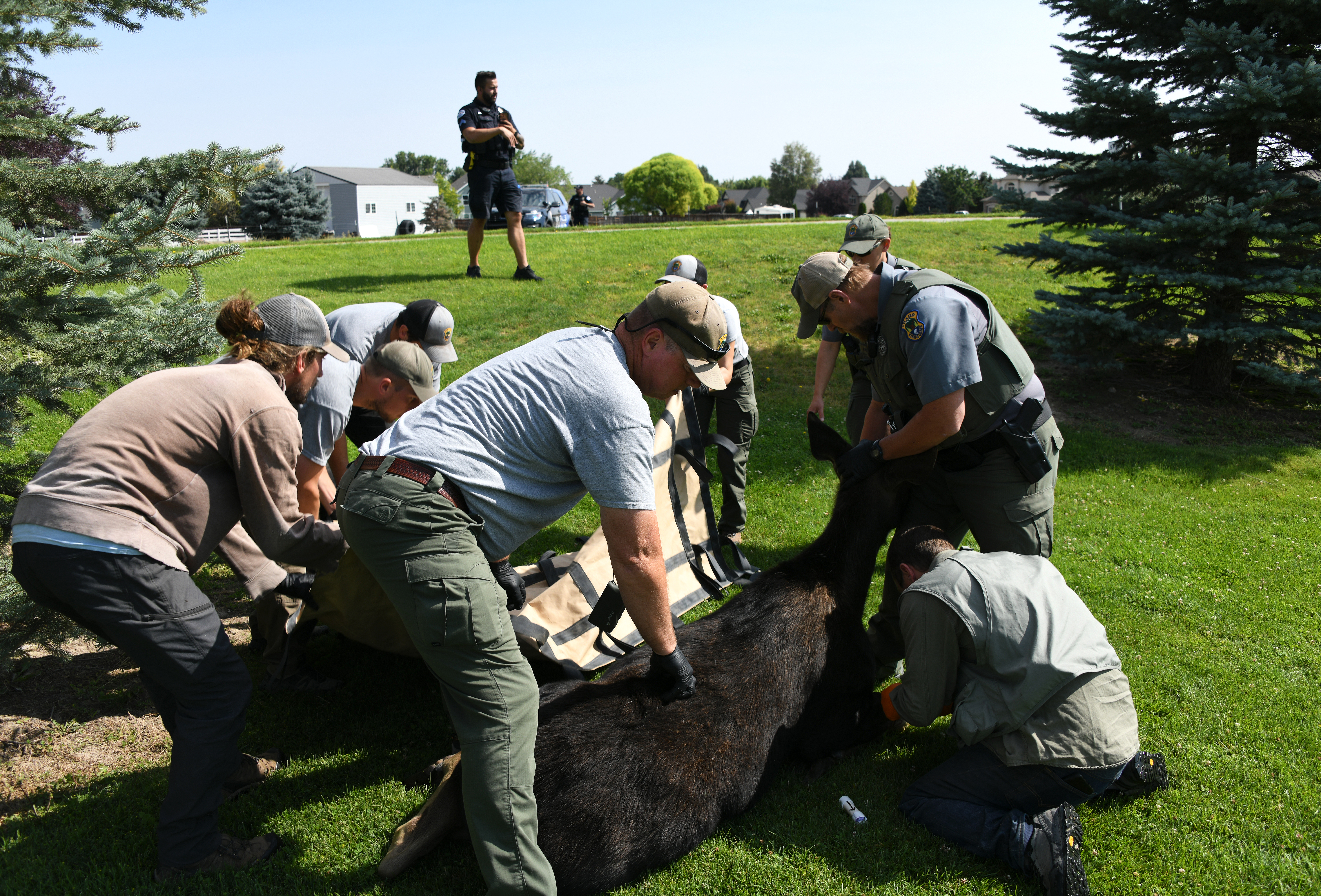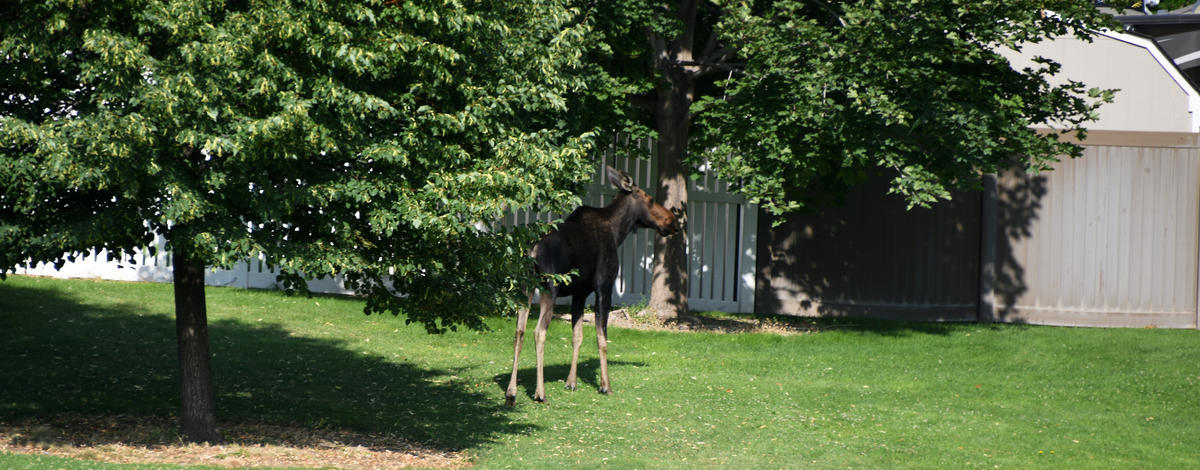Residents of northeast Twin Falls had an unexpected visitor on Sunday, July 18, when they awoke to a yearling moose wandering throughout their neighborhood. Originally reported in the Kimberly area four days earlier, the moose slowly made its way into Twin Falls. While seeing a moose is an exciting event, having one in a residential neighborhood quickly raises issues of public safety, especially as residents take their morning walks, often with dogs.

A yearling moose found its way to a Twin Falls city park.
The Twin Falls Police Department started receiving phone calls and reports of pictures of moose on doorbell cameras on Sunday morning near Jason’s Woodland Hills Park. Twin Falls officers were instrumental in insuring local residents were informed and in their immediate efforts to herd the moose to a safe zone in a city park. The city officers were key to keeping the moose calm and to keep it from disappearing into someone’s backyard, all of which led to a smooth capture operation.

A moose in Twin Falls, Idaho captured on a doorbell camera.
Conservation officers and biologists from Fish and Game were called to handle the capture and relocation of the moose.
The moose was safely anesthetized and released north of Carey.

Conservation officers and wildlife biologists ready a darted moose for relocation.
Wildlife in an urban setting can be stressful to both the animal and to residents. In situations where there could be the need to dart and move the animal community residents are encouraged to not approach the animal and not allow pets in the area which keeps the wildlife and the capture team safe.
While moose moving through Twin Falls is not a common event, it does happen almost every year. Typically, these are yearling moose who have been driven away from the cow moose prior to her giving birth to this years’ calf.
A special thank you to the City of Twin Falls Police Department for their assistance with the moose capture and for keeping local residents safe throughout the morning.
How to be safe when near moose
With moose becoming common throughout southern Idaho, residents are reminded to never allow your dog to have the opportunity to chase a moose. Dogs can be viewed as a threat, especially if they were to try and chase a moose.
If you know a moose is present, make noise to let the moose you are near so you do not surprise them.
Do not hike or trail run with headphones or ear buds. Most wildlife will give out some kind of warning sounds prior to an attack or aggression. Wearing headphones or earbuds eliminates your extremely valuable sense of hearing.
If a moose is encountered, watch the behavior of a moose, looking for signs of agitation or stress. If a moose lays their ears back, that means they are stressed and could charge at any time, as does when the hair on their neck raises. Moose will often snort or grunt, or stomp their hooves when stressed or feel threatened. If you see any of these behaviors the best course of safety is to put a barrier between you and the moose – like a tree or a vehicle.
There are times when a moose might be more apt to charge:
- Putting yourself between a cow and calf
- During the mating rut, males can become very agitated.
- In late winter when moose are coming out of a long winter, food is scarce and their fat reserves are depleted. This is a stressful time for moose as well as other wildlife.
For more information about moose or how to stay safe around them contact the Magic Valley Regional Office at (208) 324-4359 or your local Fish and Game office.

